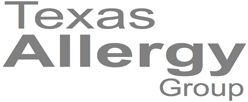
Local anesthetic has been used to provide anesthesia or local numbing and pain relief since the 19th century since the discovery of cocaine. Those can be used topically like in some topical pain relief creams, pastes or patches, as a local nerve block in minor surgeries or dental procedures. There are two distinct types of reactions to local anesthesia: (1) Allergic contact dermatitis, or (2) Urticaria and anaphylaxis. Allergy to local anesthetics can be due to the ester or amide group. They can be safety tested and challenged in an allergy clinic where trained physicians and staff with special skills in diagnosing and treating this condition can mornitor and treat your reactions. Common local anesthetics are (1) Amides: Lidocaine, Bupivacaine, Mepivacaine, Prilocaine… (2) Esters: Butacaine, Benzocaine, Tetracaine, Procaine, Chlorprocaine, Propoxycaine.

